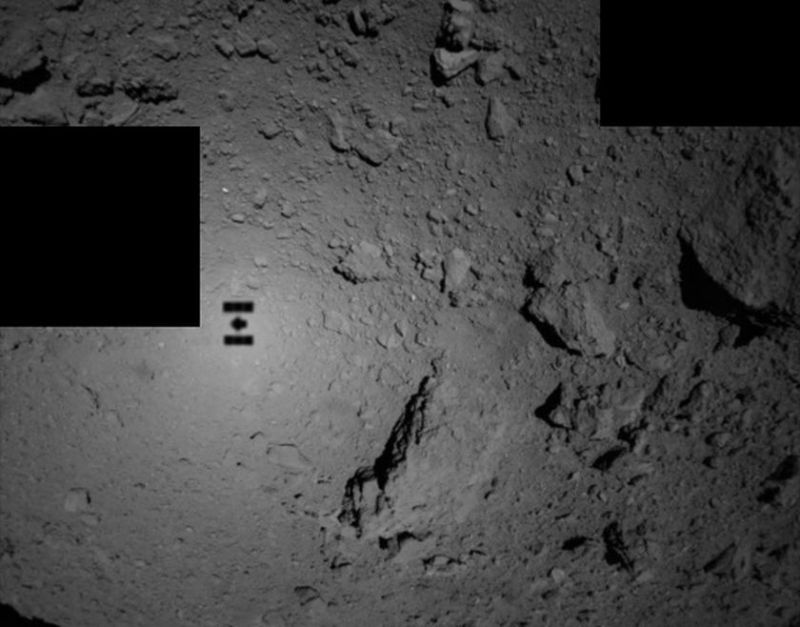
Enlarge / The Hayabusa2 spacecraft spies its shadow as it descended toward Ryugu to deploy two small rovers. (credit: JAXA)
Early on Sunday morning, the skies above a secluded military complex in central Australia will be brightened by a fireball plummeting to Earth. It will be a flamboyant homecoming for the sample return capsule from Hayabusa2, a Japanese spacecraft launched almost exactly six years ago on a mission to shoot an ancient asteroid and steal some of its dirt. If the capsule survives its fiery descent, its payload of pristine space rock will help scientists understand the earliest days of our solar system, shed light on the mysterious origins of meteorites, and may even provide clues about the emergence of life on Earth.
By the time it lands under parachute in the Australian outback, the sample will have traveled more than 180 million miles from Ryugu, a diamond-shaped asteroid orbiting the sun between Earth and Mars. Scientists believe that Ryugu broke off from a larger parent body only a few million years ago, but the rocks that compose it are closer to 4 billion years old. Hayabusa2 camped out around Ryugu for more than a year and a half, studying the asteroid from a distance and sending robotic scouts to its surface to prepare for a sample collection. It’s main mission was to collect just a few grams of dust and pebbles from this cosmic time capsule that has been preserved for eons in the frigid vacuum of space.
No comments:
Post a Comment